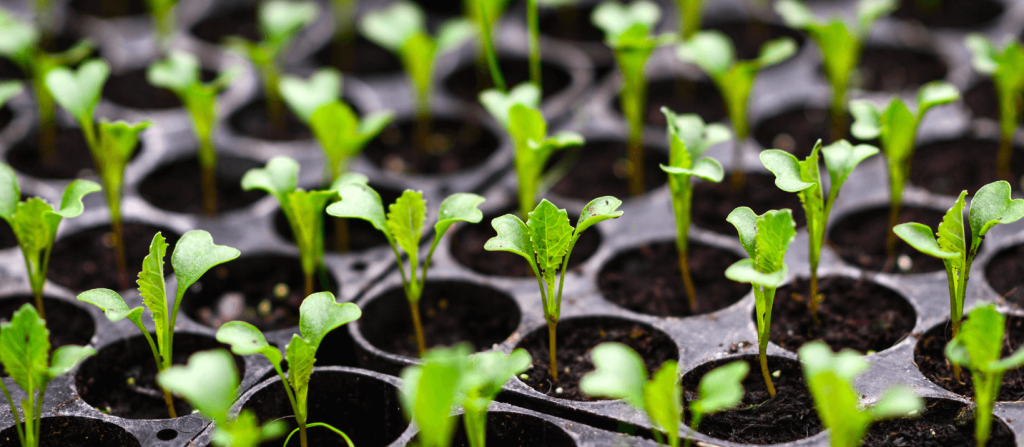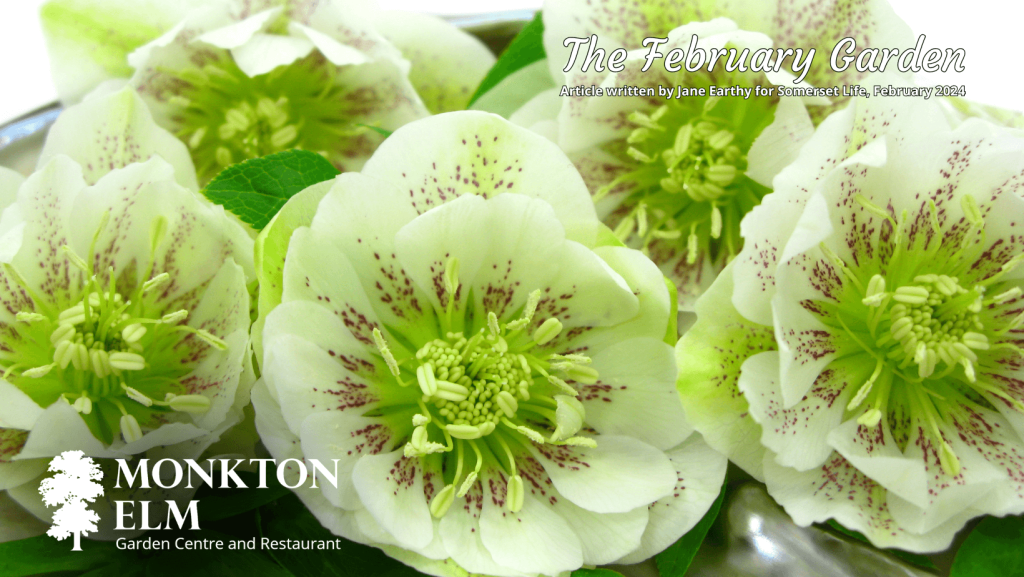Heavenly Hellebores
Hellebores are the heroes of the winter garden, their stunning flower shapes and colours delighting those who stop a while to admire them. Most garden varieties are super-hardy, undemanding and easy to grow, and offer a rich source of nectar for early pollinators. Modern breeding, however, has ensured that there are ever more interesting cultivars available for us to try.
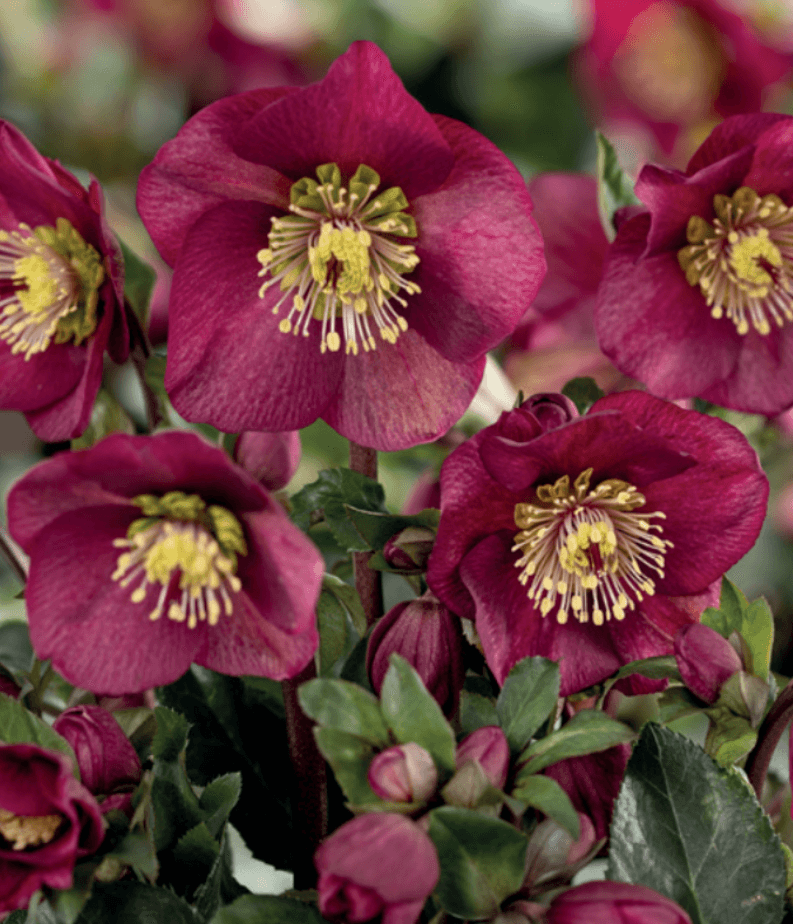
The Ice N’ Roses series (mainly H. x glandorfensis) is a cross between H. x ericsmithii and H. x hybrida and offers large blooms that are carried high above the leaves and look you right in the eye, together with an exceptionally long flowering period, with new blooms continuously replacing old ones.
Flower colours range from deep red, rose and white to bicoloured varieties. Another modern collection is the Gold collection, introduced by Heuger of Germany.
Forty years of breeding experience has resulted in one of the most intensively tested range of Hellebores in the world, and the newly introduced group ‘Winter Ballet’ will be another winner. ‘Mother Nature’s Winter dance instructor, blooms twirl in freezing temperatures, giving snowflakes a run for their money. A floral performance that could melt even ice’ is how they describe it. Much to live up to, but their past successes give me no reason to believe otherwise.
Traditionally, the foliage of hellebores such as the Lenten Rose (Helleborus X hybridus) is removed in late winter, as the flower buds begin to thrust upwards from the soil. Leaves become unsightly over winter and can harbour disease, and their removal also displays the flowers to their full advantage. However, there are now Hellebores with marbled leaves that are too attractive to remove. One such group is the ‘Frostkiss’ collection from Rodney Davey, a breeder from Devon. Taking over 15 years to develop, from the first ‘Anna’s Red breeding has been extended to create new cultivars, which are characterised by a profusion of large, forward facing strong coloured flowers with stunning marbled evergreen foliage.
My favourite is ‘Moondance’, which has particularly striking flowers of white petals tinged with pale pink at their tips and a compelling central boss of pale lime stamens. These face outwards rather than nod. I planted it under a weeping pear together with tiny hardy cyclamen and snowdrops, and it is thriving, but it would suit container growing equally well.
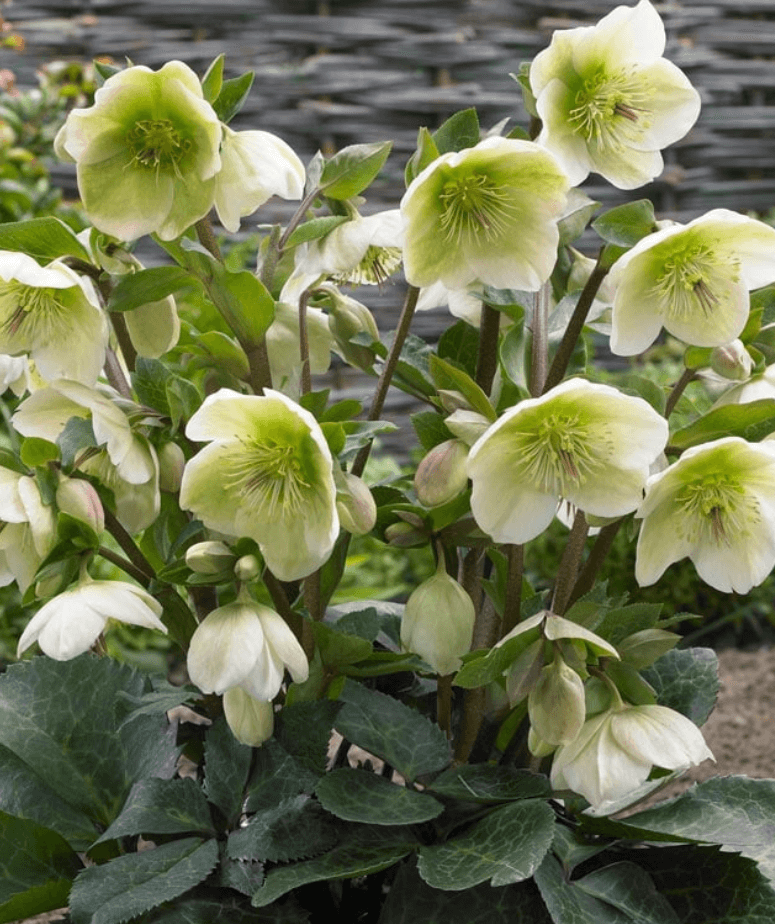
Hellebores like a partially shaded position, in rich, moisture retentive soil that is on the alkaline side. Dig in plenty of organic matter before planting, and top dress with a mulch of compost in spring. For container growing, I would use John Innes No. 3 mixed with about a third of peat free multipurpose compost, with some horticultural grit added for extra drainage
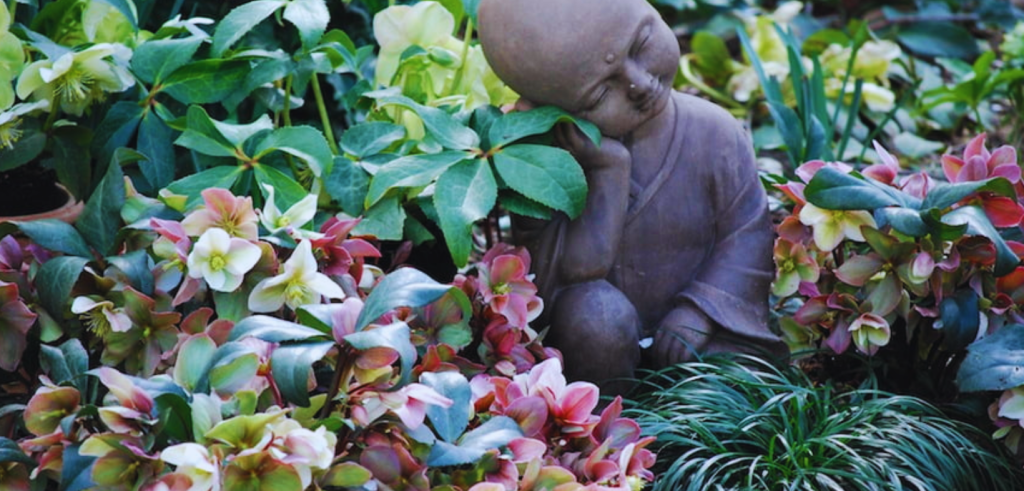
Jobs in the February Garden
- Sort your seed collection, checking ‘sow by’ dates and replacing any old seed. For instance, carrots and parsnips rarely germinate well from old seed. File in a tin with monthly divisions – it’s a real time saver later.
- Give the garden a weed ‘blitz’ – its easy to spot perennial weeds at this time of year and removing them now should stand you in good stead for the coming season.
- Cut back ornamental grasses now, within a couple of centimetres of the ground.
- Prune hardy fuchsias to about 15cm from the ground.
- Move snowdrops in clumps after flowering to increase stocks.
- In the vegetable garden, start chitting potatoes in trays in a cool light place to encourage early shoots to grow.
- Asparagus beds should be mulched heavily now.
- Force rhubarb for early succulent stems by putting a large bucket or dustbin over a crown to exclude light.
